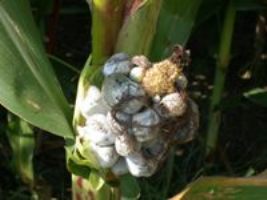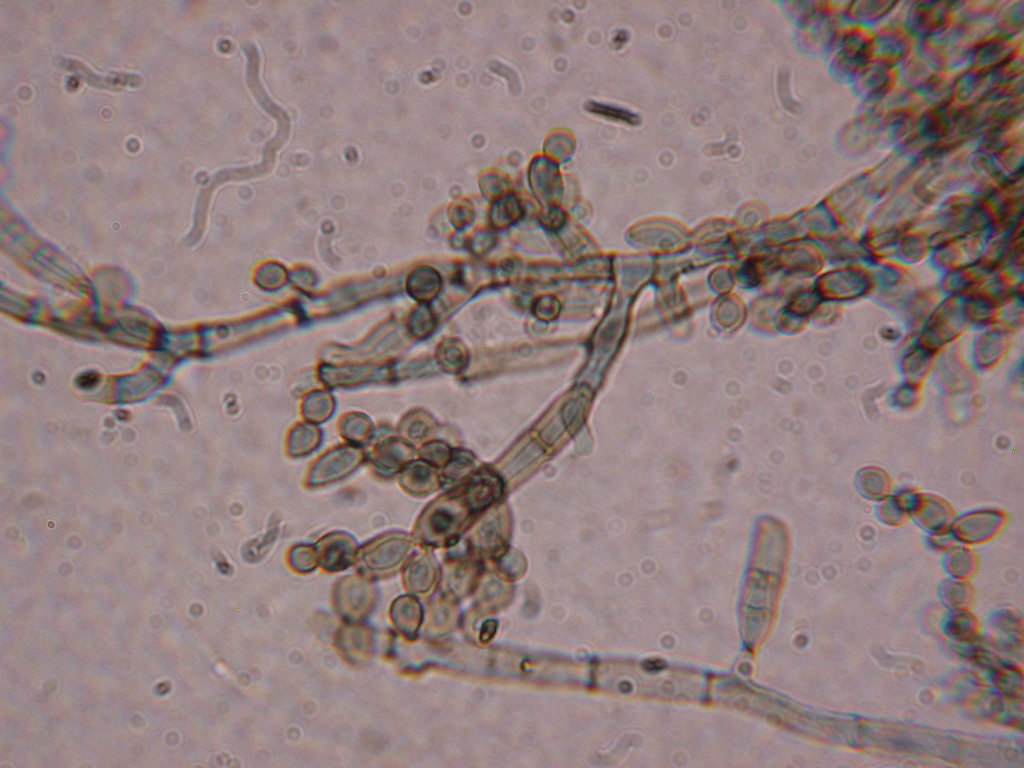Woa! There's More?
Even though radiation resistance may seem extremely rare, there are a number of organisms that have developed mechanisms to combat radiation.
Ustilago maydis
 Ustilago maydis is
a plant pathogen more commonly known as corn smut. Unlike Deinococcus radiodurans, it is not a bacteria, but a fungus. U. maydis
was the first eukaryotic organism discovered with radiation resistance.
The mechanism of its survival remains a mystery for the most part.
Although it has been determined that mutating any of the genes controlling
homologous repair causes the organism to become radiation sensitive. They
hypothesize, much like D. radiodurans, that the adaptation evolved to
protect the organism against periods of desiccation.
Ustilago maydis is
a plant pathogen more commonly known as corn smut. Unlike Deinococcus radiodurans, it is not a bacteria, but a fungus. U. maydis
was the first eukaryotic organism discovered with radiation resistance.
The mechanism of its survival remains a mystery for the most part.
Although it has been determined that mutating any of the genes controlling
homologous repair causes the organism to become radiation sensitive. They
hypothesize, much like D. radiodurans, that the adaptation evolved to
protect the organism against periods of desiccation.
Chernobyl Soil Fungi
 More
interesting yet, were the organisms discovered at the site of the nuclear melt
down at Chernobyl Atomic Energy Station. There were as many as 200 species
of fungi isolated growing around the site. Some of which were not only
thriving in the presence of radiation, but actually growing towards the source.
One of which is the fungi, Cladosporium sphaerospermum which is shown
in photo to the right. The mechanism of their survival is also just pure
speculation. The latest theory involves the increase of melanin or quinine
found in the fungi.
More
interesting yet, were the organisms discovered at the site of the nuclear melt
down at Chernobyl Atomic Energy Station. There were as many as 200 species
of fungi isolated growing around the site. Some of which were not only
thriving in the presence of radiation, but actually growing towards the source.
One of which is the fungi, Cladosporium sphaerospermum which is shown
in photo to the right. The mechanism of their survival is also just pure
speculation. The latest theory involves the increase of melanin or quinine
found in the fungi.
Sick of bacteria and want to learn more about cool fungi like these? Check out Tom Volk's fungi webpage.
Done with Fungi and want to get back to those adorable little prokaryotes?